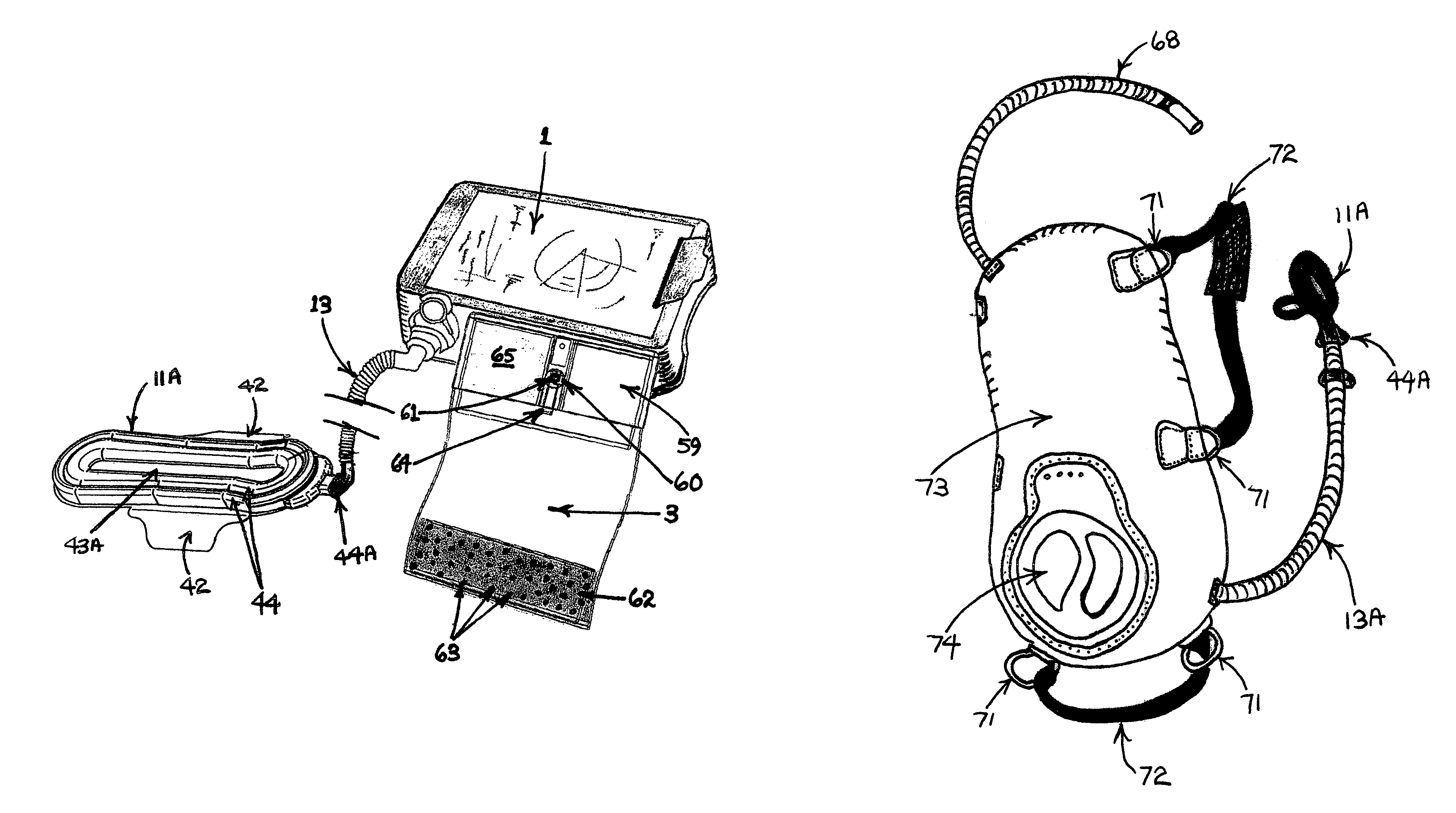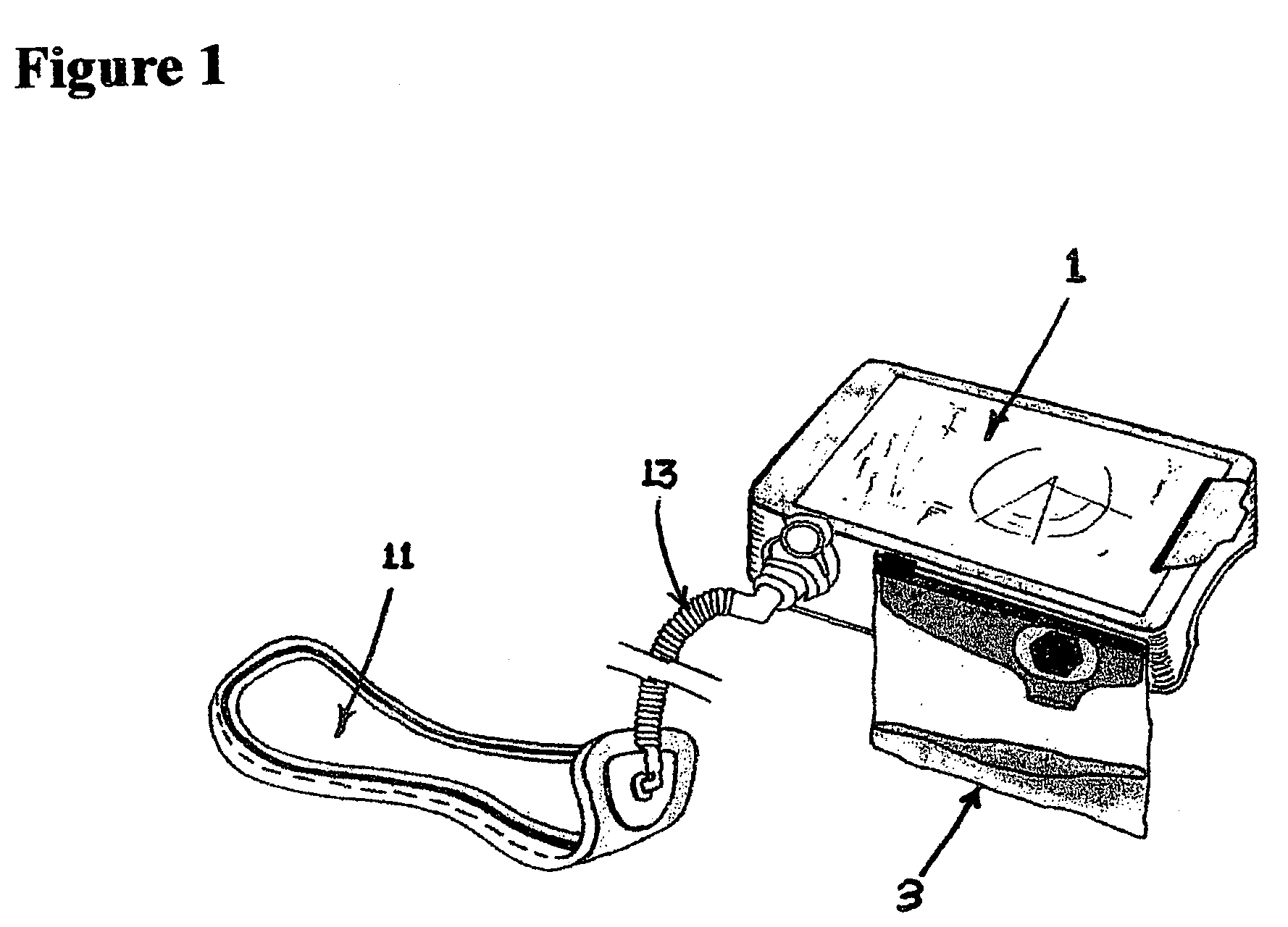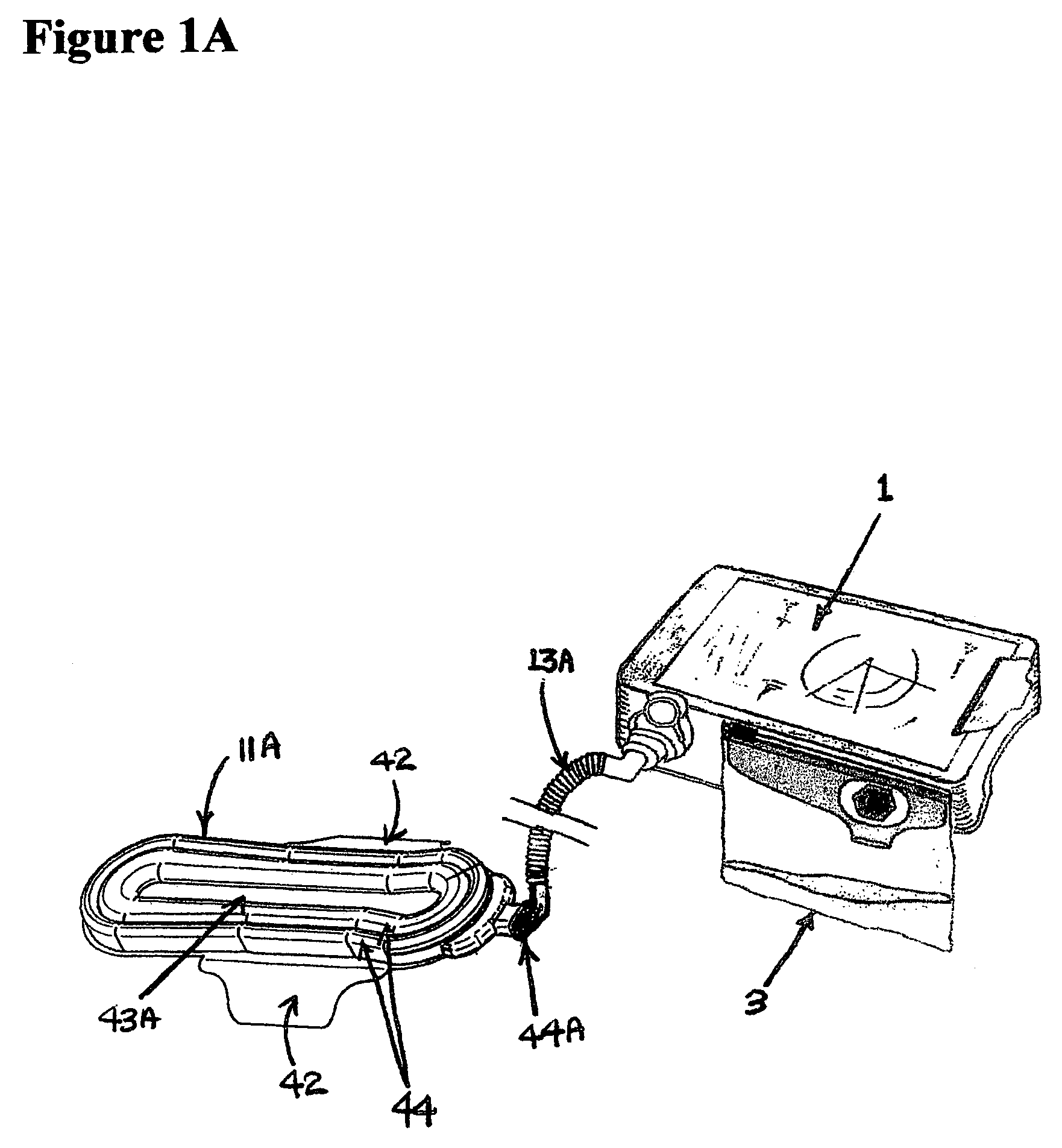For example U.S. Pat. No. 4,886,508 (Washington, 1989) discloses a ladies' external catheter assembly, however this device does not use a vacuum pump for drainage or utilize a moisture sensor.
Also U.S. Pat. No. 4,610,675 (Triunfol, 1986) teaches a device for collecting fluid discharged from female organs that is designed solely for incontinent women, not female aircrew members and the design includes a pad, vacuum pump and liquid sensor, however, the pad is more invasive because it is formed of plastic and has ridges to move the labia to an open position for free flow of liquid.
There are no acceptable bladder relief systems for incontinent adults.
Many incontinent males use commercially available diapers, which cannot contain urine from multiple urinations, and become heavy and uncomfortable when wet.
The problem with these Chem-suits (also called Hazmat suits) is that a user has no means of urine disposal of hydration without exposing a portion of their body to potentially dangerous biological and chemical agents.
In most situations that military and environmental hazard workers find themselves, they are often unable to escape the hazard for extended periods of time creating a significant health risk from dehydration and bladder strain if the user fails to urinate, or irritation and discomfort if the user urinates in the Chem-suit without a containment means.
It has been observed that users of Chem-suits while in training will routinely expose parts of their body to urinate or hydrate, which if in a real life hazard situation could cost them their life.
In high heat environments the users of Chem-suits experience rapid dehydration.
Some attempts have been made to utilize canteens that are externally mounted to the suit, however, these applications are quite limited in the capacity of water that can be practically carried.
Furthermore the hip mounted aspect of these canteen configurations are cumbersome and often get in the way of a user trying to work in a Chem-suit that is already cumbersome without a further protrusion from the hip.
While each of these prior art patents disclose bladder relief systems which fulfill their respective particular objectives and requirements, and are most likely quite functional for their intended purposes, it will be noticed that none of the prior art cited disclose an apparatus and / or method that allow a user the comfort of automatic operation without the necessity of exposing parts of their body to hazardous materials, while also allowing the user to hydrate as well.
There is also no acceptable bladder relief system for male aircrew members flying extended flight operations in single or dual-seat fighter and reconnaissance aircraft that do not have toilet facilities.
During this procedure the pilot is significantly distracted from flying the aircraft, which can place both himself and his aircraft in danger.
The current piddle pack bag system can also be dangerous to use if the pilot needs to eject from the aircraft while urinating.
None of the prior art teaches a device that self cleans the urine pumping unit.
The high concentration of urea and ammonia in decomposing urine is very destructive to pumps that are utilized to transport urine as well as the tubing and collection means utilized by these devices.
Prolonged exposure to urine can cause irritation and possible infection.
A significant problem with the prior art devices that have self contained powering systems, such as rechargeable batteries, is that users often neglect to recharge the unit and when the unit is needed it fails to work because the batteries have not been recharged.
Without the ability to urinate or hydrate a person is at significant risk of injuring themselves.
Very often these individuals are making life and death decisions which may very easily be compromised by virtue of the simple biological limitations that all humans possess.
Similarly, there is also no acceptable bladder relief system for female aircrew members flying extended flight operations in aircraft that do not have toilet or hydration facilities.
These diapers have the following drawbacks:1 Neither the Disposable Absorption Containment Device (DACD) developed by NASA nor commercially available diapers have the capacity to hold the 1000 cc of urine produced during some long duration flights.2 High g maneuvers force the female aircrew member downward into the seat, displacing urine from the diaper and leaving the female to sit in a wet flight suit and seat for the duration of the flight.3 Prolonged exposure to urine can cause skin irritation and may develop into more serious conditions such as ulcers.
 Login to View More
Login to View More  Login to View More
Login to View More 


